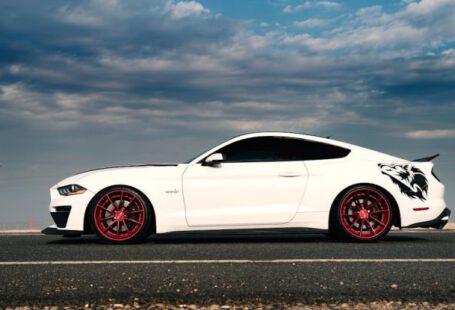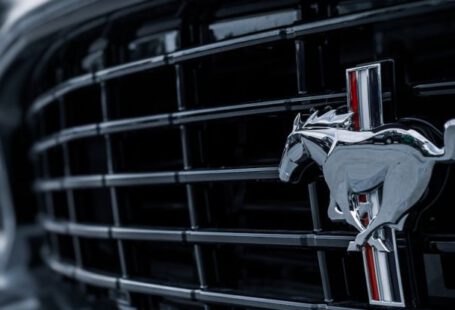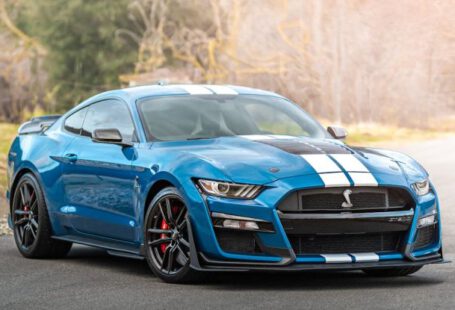The Ford Mustang has been an iconic symbol of American automotive history since its debut in 1964. With its sleek design, powerful performance, and cultural impact, the Mustang has become a timeless classic that continues to capture the hearts of car enthusiasts around the world. Throughout the decades, Ford has released numerous Mustang models, each with its own unique features and characteristics that have contributed to the car’s enduring popularity. Let’s take a closer look at some of the most iconic Mustang models through the years.
### The 1960s: The Original Pony Car
The 1960s marked the birth of the Ford Mustang, often referred to as the first-generation Mustang or the “1964 1/2” Mustang. This model was a game-changer in the automotive industry, introducing the concept of the pony car – affordable, compact, and stylish sports cars with a long hood and a short rear deck. The 1964 1/2 Mustang came in coupe and convertible body styles, offering a range of engine options that catered to different preferences, from the fuel-efficient inline-six to the high-performance V8.
### The 1970s: The Muscle Car Era
In the 1970s, the Ford Mustang underwent significant changes in response to evolving industry trends and regulations. The second-generation Mustang, introduced in 1974, featured a larger body and a more prominent grille, reflecting the era’s emphasis on bold styling. The Mustang II, as it was known, offered a variety of engine choices, including a turbocharged four-cylinder option, catering to consumers’ diverse needs during the fuel crisis of the decade.
### The 1980s: The Fox Body Revolution
The 1980s saw the introduction of the third-generation Mustang, commonly known as the Fox Body Mustang. This model was a departure from the previous generation’s design, featuring a sleeker and more aerodynamic body style. The Fox Body Mustang was a favorite among performance enthusiasts, with options like the iconic 5.0-liter V8 engine that delivered impressive power and acceleration. Its lightweight construction and customizable nature made it a popular choice for drag racing and aftermarket modifications.
### The 1990s: The Modern Muscle Car
In the 1990s, Ford introduced the fourth-generation Mustang, signaling a return to the car’s muscle car roots. This model featured a more refined design with rounded edges and improved handling characteristics. The Mustang GT of the 1990s boasted a powerful 5.0-liter V8 engine, delivering a balance of performance and comfort that appealed to a wide range of drivers. The introduction of the SVT Cobra added a high-performance variant to the lineup, further solidifying the Mustang’s reputation as a true American muscle car.
### The 2000s: The Retro Revival
The 2000s brought about a wave of nostalgia for classic car designs, leading Ford to introduce the fifth-generation Mustang with a retro-inspired look reminiscent of the original 1960s models. This model featured a return to the long hood and short rear deck proportions that had made the Mustang an instant classic. The fifth-generation Mustang offered a range of engine options, including the potent 5.0-liter V8 in the GT trim, appealing to both traditionalists and modern performance enthusiasts.
### The 2010s: The Evolution Continues
In the 2010s, Ford unveiled the sixth-generation Mustang, which embraced a more modern and global approach to design and performance. The sixth-generation Mustang featured a sleeker body style, advanced technology features, and a range of engine options, including turbocharged four-cylinder and V6 engines in addition to the classic V8. The introduction of the Shelby GT350 and GT500 variants showcased Ford’s commitment to pushing the boundaries of performance and innovation in the Mustang lineup.
### The Future: What Lies Ahead
As we look to the future, Ford continues to push the boundaries of automotive design and technology with the upcoming seventh-generation Mustang. With advancements in electric and hybrid powertrains, as well as autonomous driving capabilities, the Mustang is poised to evolve while staying true to its heritage as an iconic American muscle car. Whether you’re a fan of classic designs or cutting-edge innovation, the Mustang’s legacy of performance and style is sure to endure for generations to come.
### In Closing
The Ford Mustang has cemented its place in automotive history as a symbol of American ingenuity, performance, and style. With each new generation, Ford has continued to innovate and push the boundaries of what a muscle car can be, while staying true to the Mustang’s timeless appeal. From the original pony car of the 1960s to the modern-day powerhouse of the 2010s, the Mustang has captured the hearts of enthusiasts around the world and will undoubtedly continue to do so in the years to come.





